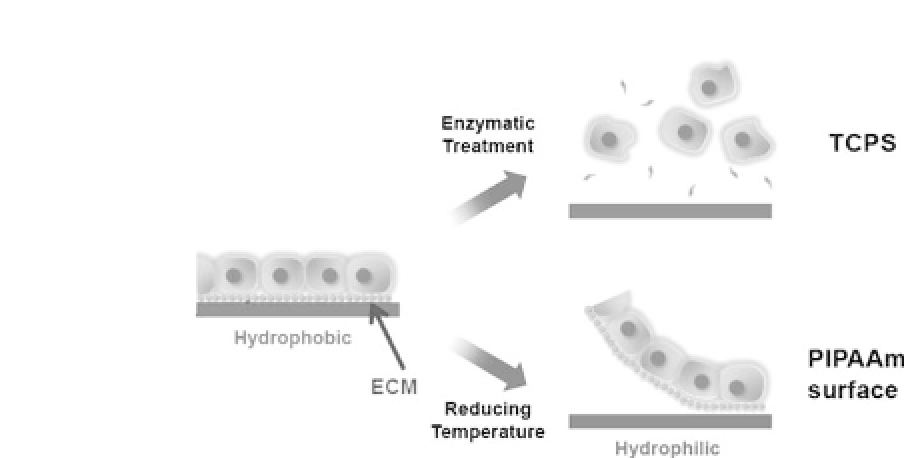Biomedical Engineering Reference
In-Depth Information
Figure 44.1.
Cell sheet harvest from PIPAAm-grafted surfaces. Cells can
adhere onto temperature-responsive surfaces at 37
◦
C, whereas lowering
temperature to 20
◦
C facilitates the detachment of patterned cell sheets.
In the case of tissue culture polystyrene (TCPS) dishes, enzymatic treat-
ment, which is necessary for the harvesting of cells, seriously damages
cell-cellconnectionsandthedepositedECM.
Abbreviation
:PIPAAmpoly(
N
-
isopropylacrylamide). Reprinted with permission from Y. Kumashiro
et al.
,
Anal. Biomed. Eng.
, 38,6,1977.Copyright 2010.
44.2 The Basic Mechanism of Cell Attachment to and
Detachment from Temperature-Responsive Surfaces
The temperature-responsive polymer poly(
N
-isopropylacrylamide)
(PIPAAm) possesses a lower critical solution temperature (LCST) of
32
◦
C in water. Below the LCST, PIPAAm is fully hydrated and solu-
ble in aqueous solution, but it collapses extensively and becomes
insoluble in the solution above the LCST. This unique feature of
PIPAAm has been exploited for various biomedical applications,
as have PIPAAm's hydrophobic interactions with amino acids and
proteins.
16
,
17
By grafting polymergelsontocellculture dishesusing
electron beam (EB) irradiation, temperature-dependent cell adhe-
sion/detachment control can be achieved, with the development of
temperature-responsive culture surfaces for tissue engineering and
regenerative medicine applications. Confluently cultured cell mono-
layers on hydrophobized PIPAAm modified surfaces at 37
◦
Ccanbe
detached as single-cell sheets by lowering the culture temperature








Search WWH ::

Custom Search